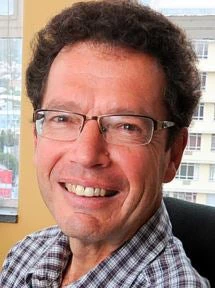
About one in three urban residents (over 900 million people) in developing markets live in informal settlements. Do these slums help lift people out of poverty by providing affordable entry points to access urban assets, services and livelihoods? Or do they confine people to enduring hardship and vulnerability in squalid and unsafe environments with little prospect of upward mobility?
We published a recent paper on the theory and reality of urban slums to explore which of these processes are more prevalent in practice. In particular, we looked at whether informal settlements enable people to move out of rural poverty, or confine them to insecurity and misery. Our focus is on South Africa because of the stark social and spatial inequalities, policy ambivalence towards informal settlements, and rising social unrest. We found evidence that these places do help people to get ahead, and this could shift attitudes and prompt recognition that they warrant more investment in public services.
The research discussed in the paper draws on data from the SA Labor Force Survey. It provides clear evidence that households are better-off in informal urban areas than in rural areas, but worse-off than in formal urban areas. Less than one in three (29%) working age adults in rural areas has a job, compared with nearly half (47%) of working age adults in informal urban areas. The proportion of adults in formal urban areas with a job is 51%. This suggests quite strongly that shack settlements are a step up for former rural households in that a fair proportion of adults can access urban jobs. However, other data from the same source indicates that most shack dwellers are confined to lower-paid, manual and precarious occupations. This suggests that they struggle to progress beyond entry-level positions.
Their prospects for stronger upward mobility are hampered by sluggish economic conditions and a segmented labor market with various barriers to progression, such as low skills and poor geographical accessibility to centers of employment. The contrasting conditions of shack dwellers and formal urban residents are also among the reasons for increasing frustration and violent protests in these communities.
These ‘slums’ generally consist of makeshift dwellings, which lack basic services such as water and sanitation. Residents generally have no security of tenure, so they can be evicted at short notice. As informal settlements are likely to absorb most of the world’s population growth over the next three decades, the difference these places make to people’s chances in life is crucial to the future well-being of a large section of global humanity.
Considering the magnitude of the issues at stake, the dynamics of urban slums are surprisingly under-researched and over-sensationalized. A better understanding of the relationship between slum characteristics and personal trajectories is important, set in the context of local labor market conditions. The interactions between these three phenomena - place, people and economy - are bound to exercise a decisive influence on whether informal settlements help or hinder human progress by linking people to the opportunities concentrated in cities.
Without this understanding of how shack areas affect human development, all kinds of implicit assumptions and misperceptions flourish. A common stereotype is that they are no-go areas formed in hazardous places by squatters who are anti-social, uneducated and desperate. This stigma matters when held by powerful elites who target slums for eviction because they are blamed for crime and pollution.
The opposite view is that slums are sites of remarkable self-sacrifice, high hopes and resourcefulness in the face of adversity. Their social vibrancy and energy make them worthy of special policy attention.
Neither of these polarized notions recognizes that the prospects of slum dwellers are intimately bound up with the labor market context of the city, especially the rate of jobs growth. There are also contrasting perspectives on how informal settlements evolve over time. One is that slums are part of the growth pains of societies in transition that gradually disappear as living standards rise. The other is slums are permanent poverty traps that keep mushrooming inexorably.
Our provisional findings show that further research using longitudinal data is necessary. We also need to assess the extent and timescales of economic progression accompanying migration between rural and urban areas.
Follow the World Bank Jobs Group on Twitter @wbg_jobs.



Join the Conversation